Must Reads: Nipsey Hussle’s death unified Crips and Bloods in grief. Now, peace talks carry on his call

The men arrived in twos and threes, Crips and Bloods, young and middle-aged, gathering around a picnic table in a Compton park to confront their sworn enemies.
After two hours of negotiations on a chilly, overcast Saturday in April, they came to an agreement — not a truce, exactly, but a tentative cease-fire.
The losses had been heavy, with nearly a dozen dead on each side. It was too soon to talk friendship.
But at least the Swamp Crips and the Bloods-affiliated Campanella Park Pirus could agree to stay away from each other’s territory and stop shooting at people.
“It’s a troubled past. A lot occurred, and we can’t heal that fast,” said Lamar “Crocodile” Robinson, 46, a Swamp Crip. “But it’s important for us to take the initiative and school the youngsters on what’s at stake and what they can gain.”
The cease-fire talks in Compton were part of an audacious effort by Los Angeles-area gang leaders to curtail violence in their own ranks after the killing of rapper, activist and entrepreneur Nipsey Hussle, whose influence extended beyond hip-hop culture to the realms of business and politics.
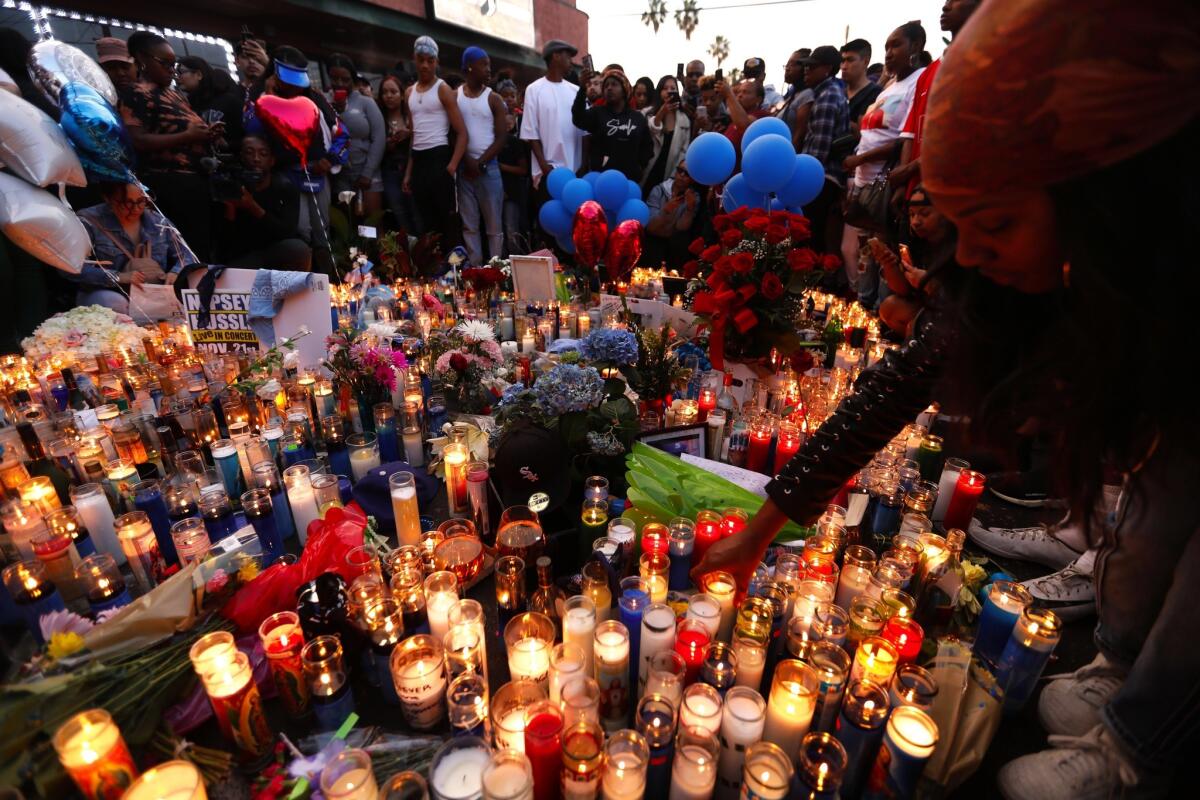
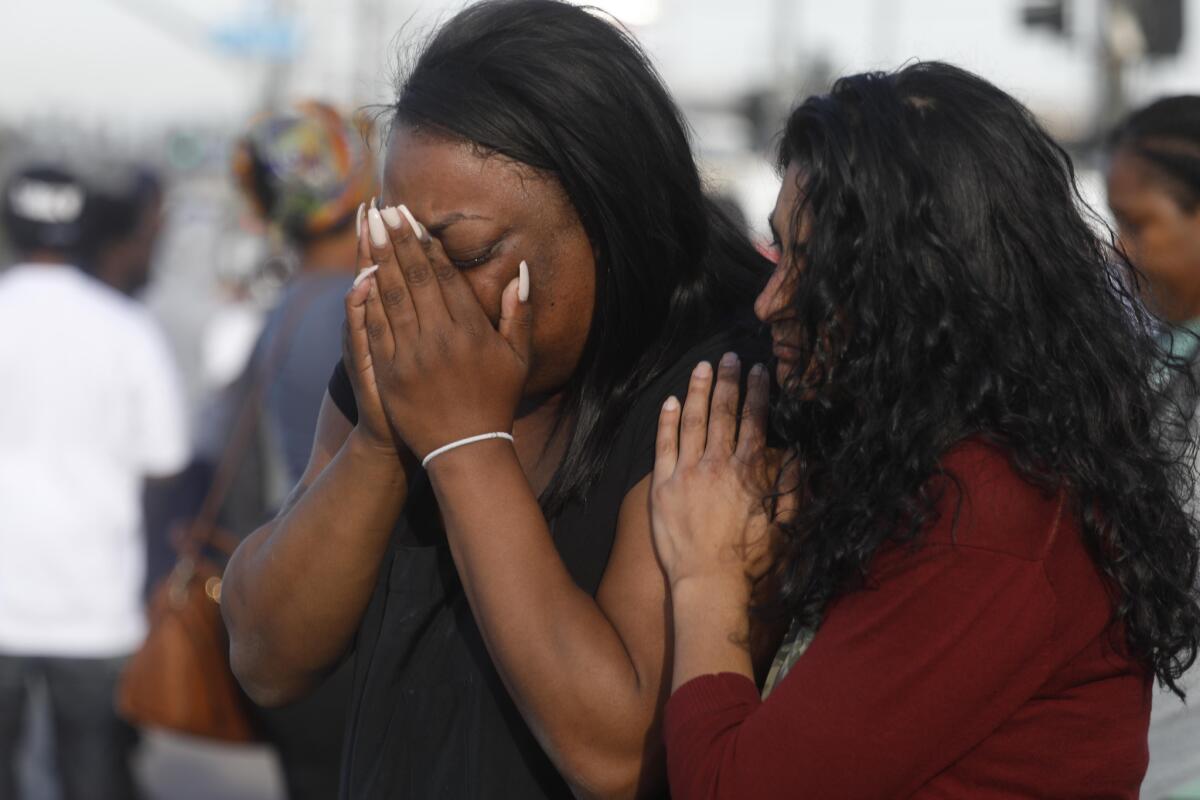
Unique among artists of his stature, Hussle, born Ermias Asghedom, remained embedded in his South Los Angeles community, and his biography — a gang-affiliated, tattooed black man pulled into street life before attaining stardom — resonated with young gang members.
Hussle spoke openly of his membership in the widely feared Rollin’ 60s Crips while setting an example by performing with rappers who were Bloods.
Leaders of the peace movement say the outpouring of grief after Hussle’s March 31 death has made it easier to convince others that the cycle of violence needs to stop.
Not since the landmark truces of 1992, which followed the devastation of the L.A. riots, has such a concerted wave of peacemaking swept through the area’s hundreds of black gangs.
“We’re going to carry what Nipsey wanted, what he was trying to preach in his songs,” said Shamond “Lil AD” Bennett, 38, of the Rollin’ 60s. “It don’t make no sense that you’re fighting over a block that you don’t own.”
Starting with a cross-section of gangs marching together at a memorial for Hussle and continuing with summits in L.A. and Compton attended by dozens of gang leaders, the movement has already yielded tangible results.
The Rollin’ 40s Crips are deep into cease-fire talks with the Rollin’ 60s, despite a war dating to 2013 and the killing of a prominent 40s elder last summer.
The Van Ness Gangsters recently held a family-friendly “hood day," including bounce houses for kids — a departure from the unruly color-strutting that is characteristic of such celebrations.
As with world diplomacy, there is no such thing as global peace among L.A. gangs, with their long-running feuds and complex alliances. Advocates for peace say that even if only a few beefs are put to rest for a short time, lives will be saved.
“We’re going to still be Bloods. They’re going to still be Crips,” said Melinda Lockhart, 49, an organizer of the May 4 hood day at Van Ness Park. “But put the guns down and let’s live.”

The spark that ignites a war can be small — a disrespectful word or jealousy over a woman. Someone is killed, grief fuels revenge, and the back-and-forth begins.
To create peace, each gang must broker agreements with its main enemies while building a critical mass of support within its own ranks. In the L.A. area, Crips and Bloods war among themselves as much as with the opposing color.
Among the questions that have arisen: Should gas stations and 7-Elevens in rival territory be off-limits? What is the punishment for violating a cease-fire?
For the Swamp Crips and Campanella Park Pirus, the meeting in the park was just the beginning.
When Laurence “Boogalue” Cartwright’s phone rang, it was someone from the Swamps. People were talking crazy on the internet.
“The other side’s been hitting me, like, ‘I got my homies under control. What’s wrong with your little homies?’” recalled Cartwright, a Campanella Park Piru.
Cartwright told the Swamps to let the man vent and see if the provocative social media posts would subside.
Among the Campanellas, some people wanted to teach the young man a lesson by beating him up. Cartwright stopped them, then convinced the man that real gangsters don’t put their business on the internet.
“Killing Nipsey Hussle only birthed a hundred more,” Cartwright raps on his debut mixtape, released earlier this month. “Imagine if black people didn’t kill each other no more.”
As with the truces of the early 1990s, the peace movement this time appears to be largely confined to black gangs. Most Latino gang members do not strongly identify with Hussle and are proceeding with “business as usual,” said Ever A. Linares, who works with Latino gangs as part of a city program to reduce gang violence.
A key to peace, many say, is to get buy-in from gang members in their teens and early 20s who are not inclined to bow to authority, even within their own organizations.
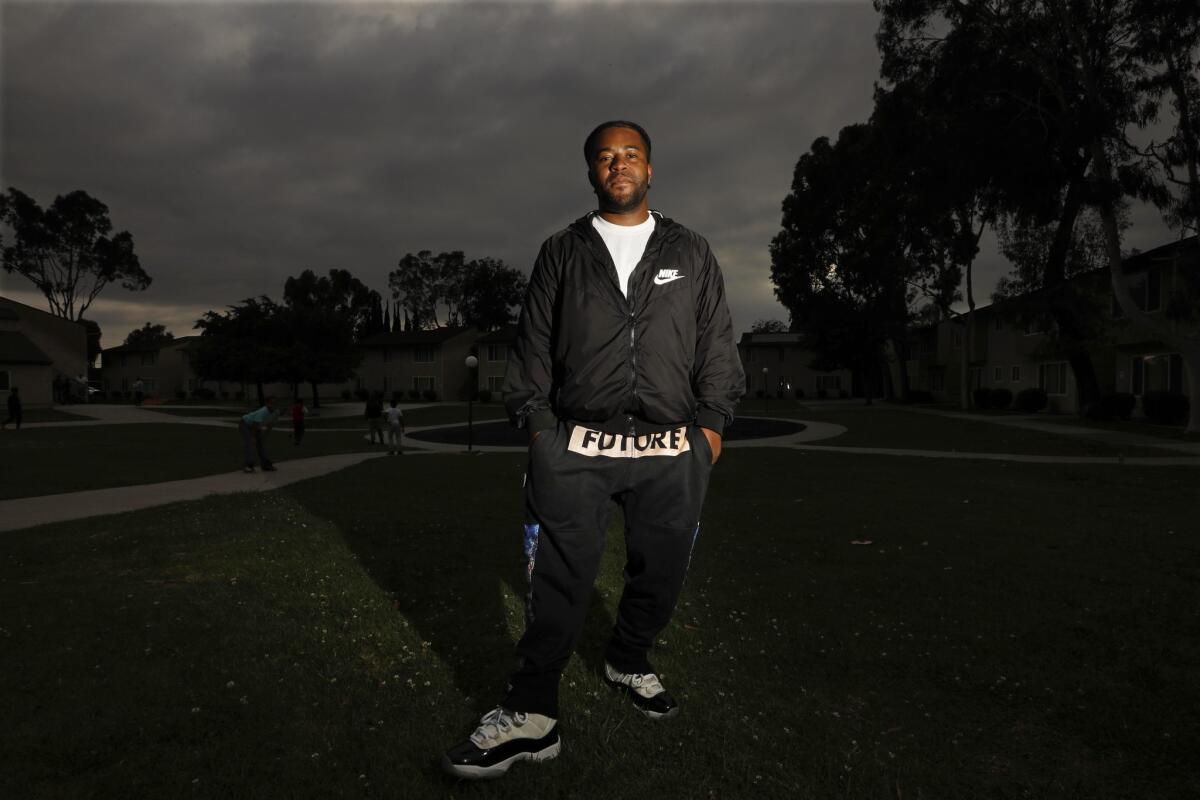
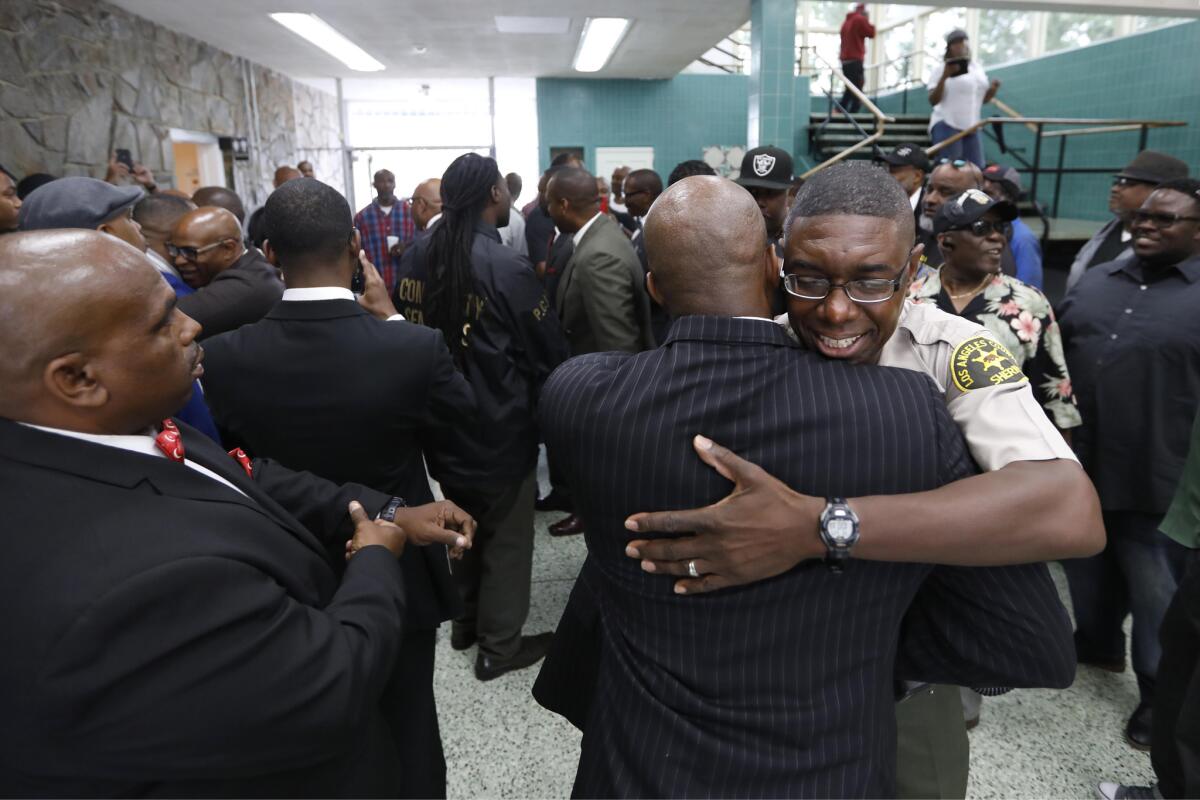

To that end, a new generation of gang leaders has come to the fore.
Lil AD from the 60s, Blue from the 40s, LaTanya from the Black P. Stones, Kne-Hi from the Raymond Avenue Crips, Boogy from Campanella Park — all are millennials in their 30s.
Older “OGs” still play a vital role, often using the relationships they built in prison, where black gangs are generally united against Latinos, to make initial overtures to an enemy.
But millennials who live on Instagram have a better chance of getting through to the youngsters on their side than OGs, who might come across more like grandparents.
“All the people that you say you want to get revenge for — is that going to bring them back to life, bro?” Bennett tells fellow Rollin’ 60s members. “Is that going to bring them out of the grave? Are they going to rise once you kill this person?”
As mourners thronged Hussle’s Marathon Clothing store the Friday after his death, Eugene “Big U” Henley issued an invitation.
All gang members, Crips and Bloods alike, were welcome to attend a vigil at the store that afternoon, the well-known rap impresario, community activist and Rollin’ 60s OG said in an Instagram video.
Members of rival gangs, including the East Coast Crips, the Hoovers and the Eight Trays, had already met several times in the days after Hussle’s death, Big U said in the video.
A video of the vigil shows dozens of gang members marching somberly toward the store. Afterward, people in red posed for photos next to others in blue.

Gang members throughout the region drew inspiration from the sight of enemies coming together to pay tribute to Hussle, who was shot outside the Hyde Park clothing shop in what police have described as a personal dispute.
Another aspiring rapper affiliated with the Rollin’ 60s, Eric Holder, 29, was indicted on one count of murder, two counts of attempted murder and other charges. He has pleaded not guilty.
The peacemaking has continued since then, with large-scale meetings as well as behind-the-scenes negotiations between warring sets.
An online flyer advertising weekly Thursday meetings for L.A. gang members states that the goal is to “orchestrate a non-aggression agreement, NOT a truce or peace treaty.” The flyer includes a hashtag that can be summarized as, “If someone isn’t messing with you, then don’t mess with them.”
In gang culture, the difference between a cease-fire and a truce is crucial. A truce implies friendship beyond the mere cessation of violence. Some who are not ready to accept a truce may accept a cease-fire.
“Some people say, ‘It’s good you’re doing that, but I’m not there yet,’” said LaTanya Ward, 38, an organizer of the Thursday meetings. “I tell them, ‘If you wind up being the one that’s on the ground taking your last ...breaths, you’re going to wish that this treaty would have ...worked.’”
Weekly peace meetings are also taking place among gangs east of the 110 Freeway, with leaders trying to stem provocative actions such as gang graffiti, said Charles “Bear” Spratley of the East Coast Crips.
Because the cease-fire talks are just beginning and the number of gang conflicts is so immense, it is too soon to establish a link to recent decreases in violence.
This year in L.A., homicides have dipped slightly, while shootings were up 12% from the same time last year. Gun violence has lessened since a surge in March that stemmed primarily from gang feuds in South L.A. But the city is entering the summer months, when conflicts often heat up.
The Compton area has been relatively quiet in the last few months, in a year that began violently. Through the end of April, there were 11 homicides in Compton, compared with seven in the same period last year.
To some gang leaders and observers, the talks between warring sets represent major progress.
“I’m extremely optimistic of these talks, and I believe they’re already saving lives,” said Alex Alonso, who teaches a course on gangs at Cal State Long Beach and runs the website streetgangs.com.
Other experts are skeptical. The gang world is too complicated, with too many individual interests to appease, for ill feelings to be completely suppressed, said Wayne Caffey, a veteran detective for the Los Angeles Police Department.
“I just don’t have any faith,” Caffey said. “You didn’t talk to this clique or that dude — how are you going to bring anybody together?”
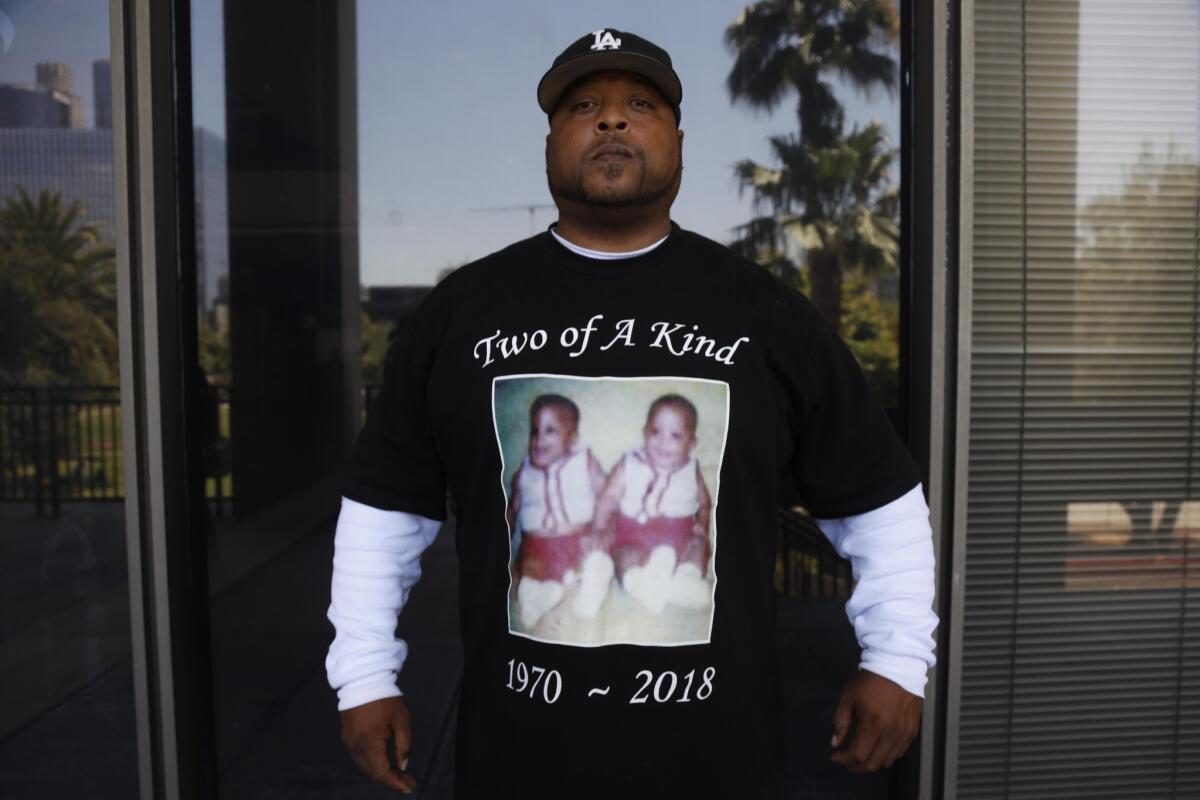
On a Thursday evening in April, several members of the Rollin’ 40s gathered on a South L.A. street corner.
They had just come from a peace meeting with some of the most formidable gangs in the city — Eight Trays, Hoovers, Rollin’ 60s, Menlos, Swans, Graveyards. Until recently, it was inconceivable for those gangs to be in the same room together.
Negotiations with the 60s were also progressing. Some 40s were using the loss of Garry “Twin” Dorton as inspiration for peace rather than fuel for revenge.
Dorton, a 40s OG, worked for a city program that employs reformed gang members to tamp down violence and steer young people away from trouble. Three young men from the 60s have been charged in his killing.
“We’ve got to understand Twin’s movement — he was a man of peace,” said Berniel “Blue” Garrett, 36, a leader of the cease-fire talks. “What would it look like if we wanted to push negativity?”
To prove his point, Garrett pulled out his phone. Within minutes, Bennett and several other Rollin’ 60s arrived. The men embraced.
Garrett and Bennett have posted photos of themselves together on social media, hoping to set an example for other gang members.
“I want to show my community that I can stand alongside this man and save a life — prove that I saved a life,” Garrett said.
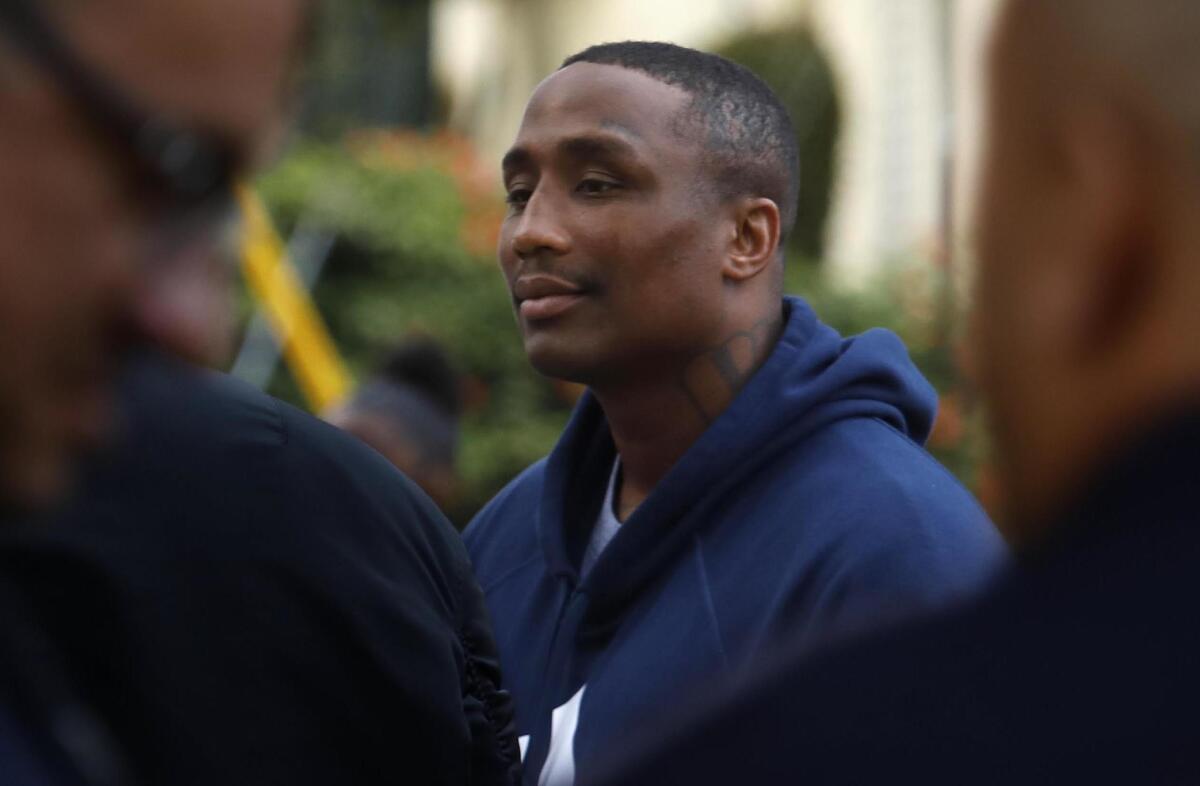
“Now we talk every day,” Bennett added.
Over lunch the next week, Santana “Big Iceman” Kelly of the 40s described a life of drive-by shootings, demonizing rival gangs and settling scores — a life he wants to leave behind.
Kelly, 47, recently returned home after nearly 19 years behind bars for evading a police officer as a three-strikes offender.
In prison, he divvied up commissary soups and care packages with cellmates including Bloods, Hoovers and 60s.
“If you went to jail right now, you’re going to fight a 60? No, you’re not,” he said. “You’re going to be like, ‘I’m just not going to mess with him.’ But on the streets, you’re going to say, ‘Kill him’? That don’t make no sense. If we can get along with them in jail, why can’t we get along with them on the streets?”
Now that he is out and peace is in the air, Kelly is heavily involved in one-on-one and small group talks with his own gang, as well as outreach to the 60s.
People close to Dorton, who was from a subset of the 40s called the Avenues, take more convincing, and some may never get on board. But cease-fires do not need to be perfect to be effective.
“Let stuff die down. Let this peace go on,” Kelly said. “If you want to do something on your own, that’s what you do. I don’t need to know, and I don’t want to know. If you do decide to hit somebody, just don’t hit somebody so high in the ranks that we can’t stop it.”
The toll of gun violence is apparent in Cartwright’s limp.
Once a promising running back and sprinter, he was shot and paralyzed when he was 15.
After two years of physical therapy, he regained enough movement in his legs to manage a bowlegged gait. He cannot stand for long without leaning against something.
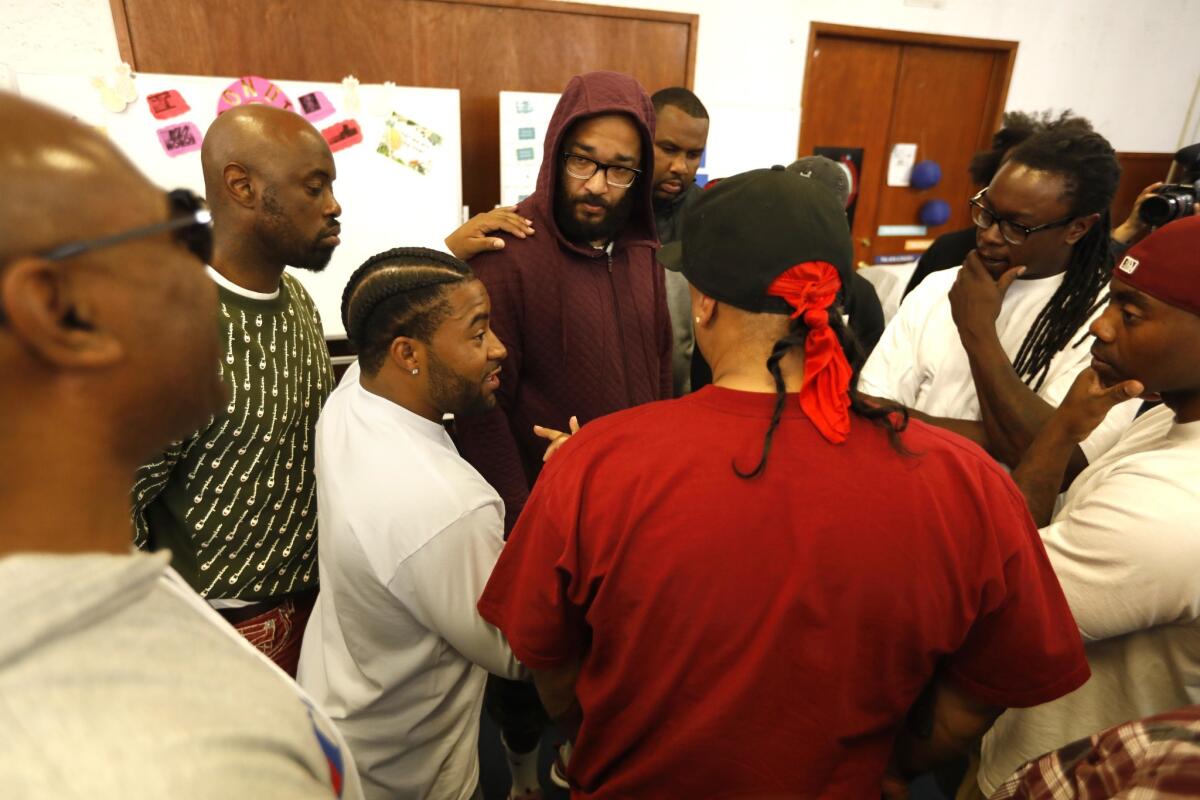
Deprived of a future as an athlete, he veered more sharply to the gang life. A few years later, he was shot again, this time outside the front gate of his Compton apartment complex. A thick scar is visible on the back of his neck.
The depth of his previous involvement in the Campanella Park Pirus gives him the credibility to advocate for peace with younger gang members.
“I used to really live this life, to really, really be out here,” said Cartwright, 30, a music producer and rapper. “So when it came to do something like this, it was only right that I was the right person to stand up for this.”
Soon after Hussle’s death, Cartwright and other Campanella Park leaders struck a cease-fire with the Nutty Blocc Crips.
Cartwright then focused on getting Compton’s many Piru sets on the same page before sitting down with more Crips.
But another leader from Campanella Park had a suggestion: Why wait? Why not kill our beef with our real enemy?
That led to the April 20 negotiations with the Swamp Crips.
“Anybody that’s real …and understand and been out here for a long time and lost people to death or lost somebody to jail, you tired of this,” Cartwright said. “Gangbanging ain’t never did nothing for none of us. None of us. This … ain’t never spoke up for me, got me out of situations in jail. This …done only cost me my brother’s life, my cousin’s life, my best friend’s life behind bars.”
One by one, the men introduced themselves: Chubb from the Neighborhoods. Chico from Holly Hood. G-Nutt from the 151s. Little Man from Fruit Town.
Some wore red baseball caps, others blue. They sat shoulder to shoulder over breakfasts of scrambled eggs and grits.
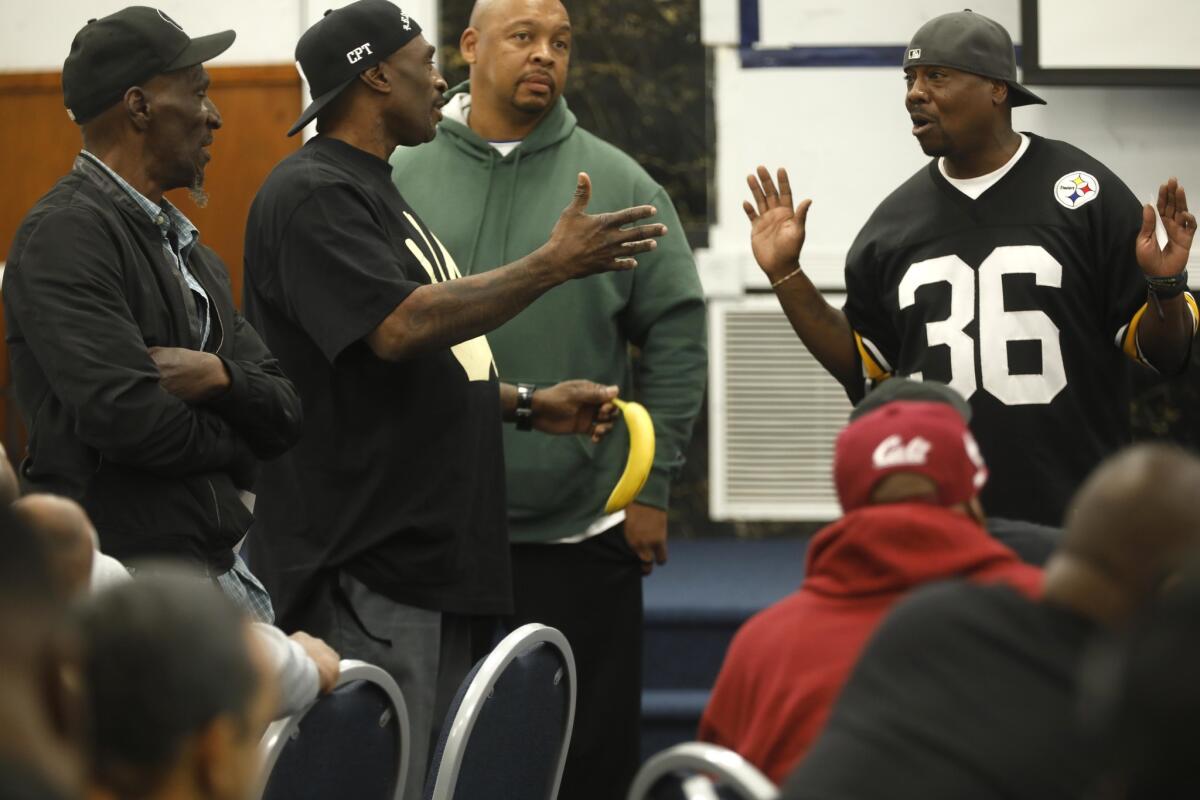
Only in the prison chow hall would Crips and Bloods ever be together like this, said Kenyan “Kenzo” Payne of the Campanella Park Pirus as he opened the Compton gang summit.
The discussion, in a church multipurpose room the Saturday before Memorial Day, quickly turned serious.
“We have to do it like it’s a sense of urgency, because it’s only going to take one killing to ruin everything. The wrong person gets killed, it’s a wreck,” said Frederick “Gangster” Staves, a Santana Blocc Crip.
He urged the gang leaders at the meeting to come to a consensus so they could go back to their own neighborhoods and muster support.
Another man, Josiah Lewis Bey from the Campanella Park Pirus, termed the situation “an emergency.”
“We can’t be nonchalant about our lives, our kids’ lives, our sons’ lives,” he said. “Why are we here? Are we here to stop the killing, or are we here just to holler at each other, network a little bit, powwow? I’m here because I’m tired of going to funerals.”
Most of the gang members in the room were older, Bey noted. What about the youngsters wielding the guns?
“I see one or two youngsters. There ain’t no shooters in here,” he said. “How are we going to get to the shooters? How are we going to get to the vast majority of the shooters, the dudes that ain’t listening?”
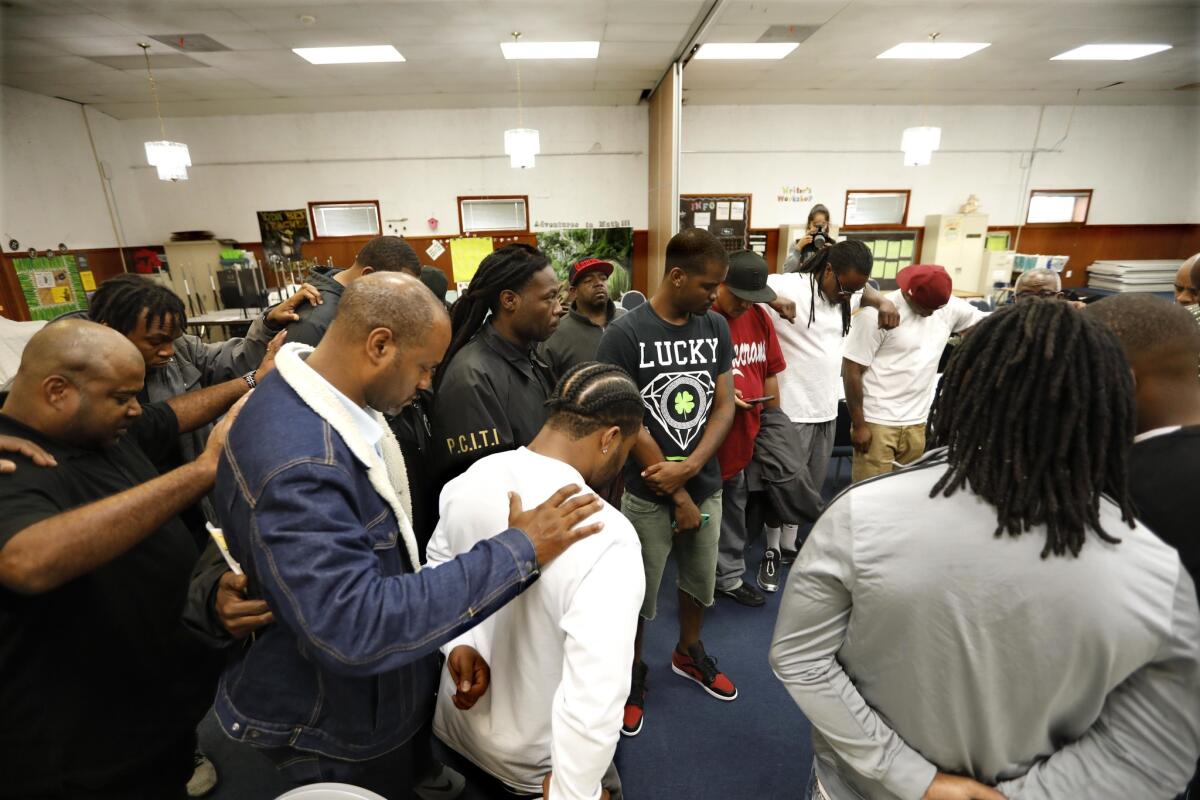
Donnie Ru of the Cross Atlantic Pirus said he had just finished eight years in federal prison. During that time, his younger brother was killed while “banging because of me,” he said.
He said he was shaken by Hussle’s death, even though the rapper was a Crip, because Hussle was “pushing positivity.”
Robinson, from the Swamp Crips, said it was time for influential gang members to take action.
“I hear a lot of dudes saying, ‘Man, them little dudes ain’t going to go for that. Them youngsters ain’t going to go for that,’” he said. “Yes, they is. They’re either going to go for it or get ...up out of here.”
Some of the gang leaders he has tried to enlist in the peace effort have been pessimistic, claiming their organizations aren’t structured enough to get on the same page.
“Man, look, man. You dudes is main dudes,” Robinson said. “If I’m talking to you on the phone — I don’t mess with no suckers, man. If I’m talking to you on the phone, that means you’re in a position to do what’s necessary.”
Someone complained about black gangs aligning with Latinos against other black gangs. People stood up and began arguing.
The meeting disbanded with a suggestion that gang members should stop flashing hand signs at rivals.
Instead, they should nod and see if the other person nods back — a sign that both are on board with the cease-fire movement.
Twitter: @NicoleSantaCruz
For more news on the Los Angeles Police Department, follow me on Twitter: @cindychangLA
Start your day right
Sign up for Essential California for news, features and recommendations from the L.A. Times and beyond in your inbox six days a week.
You may occasionally receive promotional content from the Los Angeles Times.





